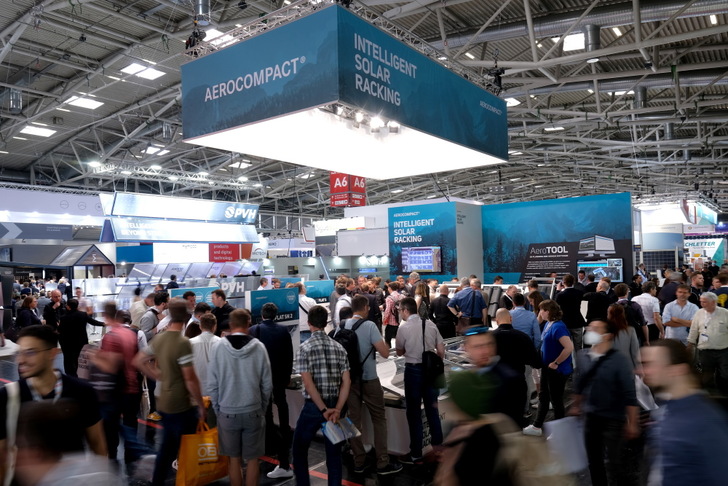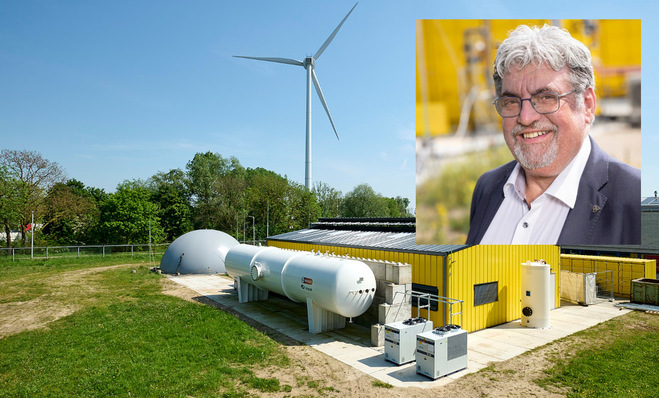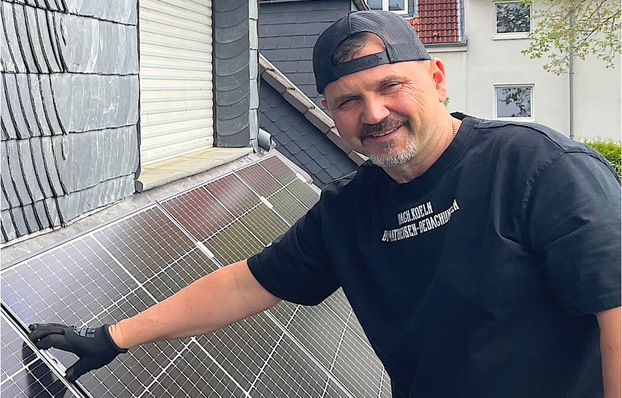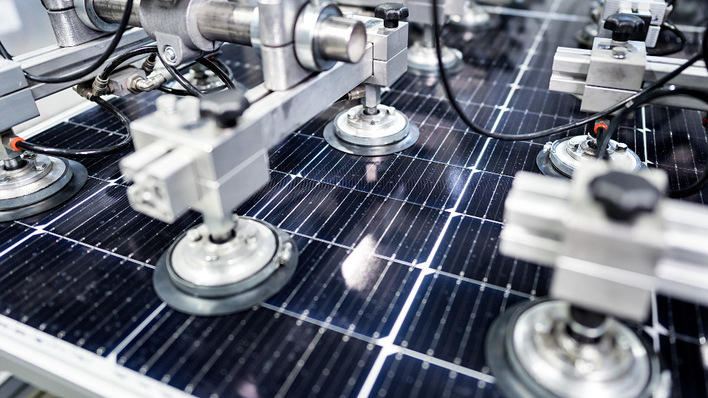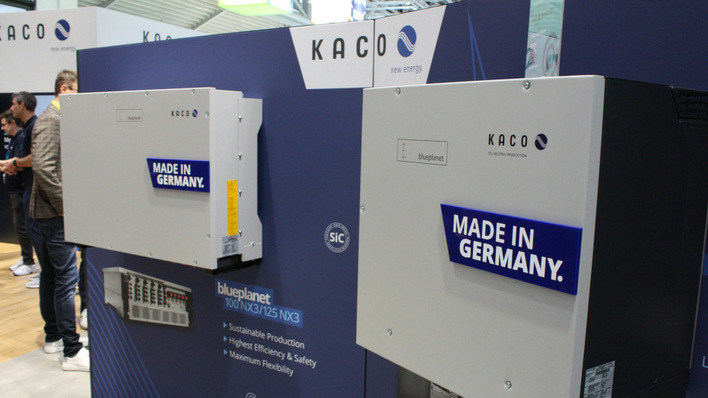This applies to roofs and facades as well as to ground-mounted applications. Because by saving material, versatile and at the same time wind-proof mounting systems, not only installation, logistics and manufacturing costs can be reduced, but at the same time the CO2 footprint can be minimized. Appropriate planning and design software as well as online training courses for installers also contribute to this.
Optimizations of mounting systems for commercial flat roofs with large PV systems are of great importance. This is because the challenge of reducing the roof loads, not damaging the roof cladding and installing the solar systems with the lightest possible substructures in a stable manner is particularly great here. Especially in the case of PV systems on large commercial buildings, the weight of the solar modules is often enormous. In addition, the profitability of systems and cost reduction usually play an even greater role in the commercial sector than for private users.
Aerodynamically designed substructures
The trend, especially for commercial flat roofs, is towards aerodynamically designed substructures with the lowest possible ballasting, which can be installed or placed without tools and without penetrating the roof. In addition, the latest generation of mounting systems, especially in the commercial sector, is usually also designed for larger, more powerful modules with lengths of 1500 to 2100 millimeters and widths of 980 to 1150 millimeters, which are becoming increasingly popular.
In many cases, clamping and locking devices or integrated tilting joints in the mounting supports are used instead of screws to mount the modules. This allows the PV panels to lie mechanically stress-free on the mounting system. Cell damage to the modules, i.e. a drop in system performance, is thus prevented. Roof supports with movable connectors can also ensure thermal decoupling of the mounting system and thus also prevent damage to the roof material.
Watch our videos pvGuided Tours/CEO Talks: K2 Systems: Quick and easy installation on the roof
Schletter Group: Mounting large modules as well
Pre-assembled base units of the substructures, which can be unfolded on the roof and connected to each other, are also becoming increasingly popular. In most cases, they have integrated cable trays or cable management. In many cases, the mounting systems can be installed with different angles of inclination, e.g. 8°, 10° or 15°, elevated or parallel to the roof and in different orientations (south, east/west). Also the possibility to mount the modules crosswise or upright or to combine wide and narrow ground rails in the same system provide a high flexibility, adapted to the respective roof. For example, more stable roof areas or lower ballasted modules can be covered with the more cost-effective narrow base rails.
Not damage the roof cladding
In most cases, the substructures stand on protective surfaces so that they do not damage the roof cladding. These can be, for example, structural protection mats made of rubber granulate, which are already pre-mounted under the floor protection rails, or protective layer fleeces made of polyester or rubber pads. It is important that the rainwater on the flat roof can drain off unhindered and that no puddles form (which would also further increase the roof load).
This can be achieved, for example, by having the pads cover only part of the mounting rails or by regularly interrupting the pre-mounted protective mats so that the rainwater can drain off unhindered through the gaps in between. Another possibility is that the PV system is mounted on load distribution plates, for example small-area aluminum profiles, and not on ground rails, thus ensuring roof drainage in all directions.
Low-ballast, aerodynamic and at the same time stable, flexible and installation-friendly mounting systems are also becoming increasingly popular for flat roofs with private PV systems.
Solutions for green roofs or facades
Optimized module mounting systems for use on greened flat roofs were also presented at Intersolar Europe 2022 in Munich. For example, a flexible system that allows vertical or horizontal module alignment with a 10° or 15° inclination at a distance of approximately 38 centimeters between the roof foundation and the solar modules.
There are also numerous further developments and improvements to PV substructures for sloping roofs - as well as facades. For example, where previously different mounting clamps were required for different module frame heights, it is now possible to mount modules with all common frame heights using a pre-mounted, height-adjustable external clamp. This simplifies installation and saves planning effort. Also presented in Munich were preassembled, rotatable multi-adapters for roof hoes. This makes them compatible with different mounting rails, both newer and older designs.
Optimized pitched roof systems
A new profile geometry minimizes material usage and increases load-bearing capacity in optimized pitched roof systems. In addition, the mounting profiles, for example, can be installed without tools using a single internal connector, which also saves time and costs during assembly.
A time-saving variant for the installation of PV systems on tiled roofs are sheet metal replacement tiles (so-called shaped sheet metal tiles), which are combined with roof hoes. They replace conventional tiles and can be installed on the roof with significantly fewer fasteners and can be easily connected with mounting rails or integrated into the roof structure. Tiresome tile handling is eliminated, saving time on the job site.
Modular insertion systems for PV mounting on pitched roofs with tiles as well as metal roofs are also easy to install. Some of them can also be mounted on facades or used on soundproof walls and solid parapets of balconies. PV modules of all common frame heights can be inserted directly into the profile rails, module clamps can be dispensed with in this case. The drainage of a new system presented in Munich is guaranteed for both upright and transverse mounting of the modules: because these do not lie with their full backsides in the insertion rail, the drainage holes of the module frames are not covered.
Suitable for a wide variety of module types
There are also numerous improvements in substructures for ground-mounted PV for greater material savings, ease of installation, durability, as well as the latest requirements of the market. In many cases, only a few standard elements are used, which can be flexibly elevated and which are suitable for mounting a wide variety of module types. For example, most ground-mounted systems can now also be fitted with bifacial modules. Spacers on the mounting rails reduce shading and increase the solar power yield from the back of the module.
In addition, the ground-mounted systems have been adapted so that large-format modules can also be installed horizontally or vertically. In Munich, for example, a new variant of a tracker was presented that has been specially optimized for single mounting with large-format modules. Among other things, the compact system gets by with less material per kilowatt of power due to an improved profile geometry. It is significantly lighter and yet designed for wind speeds of well over 200 Km/h and a service life of at least 30 years.
Many manufacturers have also expanded and further developed their digital services for installers. Be it improved planning and design software, project and product databases, training webinars or digital communities for PV professionals to exchange experiences. (hcn)
Next Intersolar Europe, Intersolar Europe Conference takes place in Munich, June 14-16, 2023, www.intersolar.de www.TheSmarterE.de


